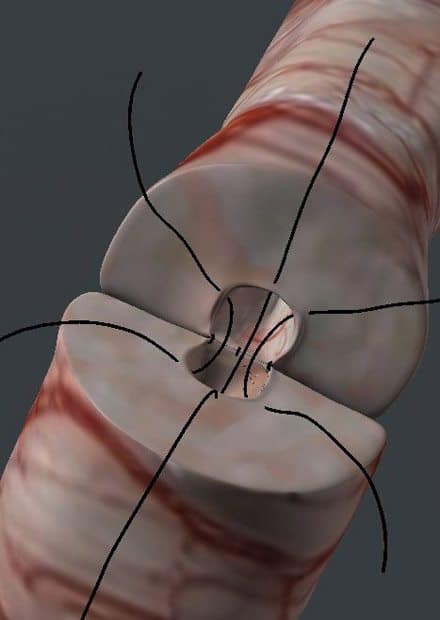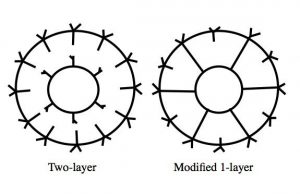New Research Shows that Vasectomy May be the New Condom for Fertility
Press Contact:
Jennifer Harris
Phone: +1 (805) 637-6439
Email: [email protected]
Extremely high reversal success makes vasectomy a temporary contraceptive
San Francisco–November 20, 2013–Research published in the journal Andrology by The Turek Clinic and the International Center for Vasectomy Reversal has dramatically changed the thinking about vasectomy reversals. This study of more than 1,200 reversals from two pioneering health care practices is the largest ever published. It demonstrates that, contrary to common thought and scientific predictions, a man’s patency (i.e., ability to get sperm in the ejaculate and potentially achieve pregnancy) after a vasectomy reversal is possible almost 40 years after the original vasectomy. In other words, like a condom, a vasectomy can be used as temporary male contraception.

For decades, conventional wisdom has been that the older the vasectomy, the less likely that a vasectomy reversal will work. But this is simply not true. This assumption has led many doctors to encourage couples to choose in vitro fertilization (IVF), a much more expensive alternative, instead of vasectomy reversal to build families.
For decades, conventional wisdom has been that the older the vasectomy, the less likely that a vasectomy reversal will work. But this is simply not true.
“Reversals performed even 38 years after vasectomy did not have worse outcomes after reversal. In fact, the patency rate after reversal plateaus after 21 years and doesn’t decrease much after that,” noted Dr. Paul Turek, senior author of the study, who specializes in microsurgical vasectomy reversals. The chance of achieving live sperm counts after reversal in men with older vasectomies (more than 15 years of obstruction) was 75% compared to 93% in men with younger vasectomies (less than 15 years), a difference that was not statistically different. In addition, excellent sperm counts are achievable after reversing older vasectomies: the average total sperm count in men with older vasectomies was 84 million per ejaculate.
What they also discovered was that the motility of ejaculated sperm after reversal trends down as vasectomy age increases. ”This is probably where the effects of time play a role on the outcomes after reversing older vasectomies,” notes Dr. Turek.
The research is unique to the field because it focused on outcomes obtained with very long intervals after vasectomy, patients only rarely studied in the literature. “This is good news for couples with infertility caused by vasectomy–the results of reversal are much better than previously thought,” said Dr. Turek.
EDITOR’S NOTE: The research paper referred to is available here on the Andrology journal website. Download the PDF here.
Multimedia
Intraoperative, high power microscopic photos
Vasectomy reversal surgery is equivalent to suturing together two pieces of spaghetti with holes in the middle.
Schematic Drawing

3D Modeling

(Image courtesy of Morphic 3D Modeling)
About Paul Turek, MD, FACS, FRSM
Male reproductive health expert Dr. Paul Turek is founder of The Turek Clinic, a leading health care destination for men worldwide, based in Los Angeles and San Francisco. Dr. Turek is president of the Society of Male Reproduction and Urology, and a recent recipient of a prestigious National Institutes of Health (NIH) grant for research designed to help infertile men become fathers. A former Professor and Endowed Chair at the University of California San Francisco, Dr. Turek has pioneered innovative techniques for treating male infertility, including Testicular Mapping (also known as Sperm Mapping™ and FNA Mapping), and has helped to popularize the No-Scalpel Vasectomy. Dr. Turek has published some of the highest success rates worldwide for vasectomy reversals. He sits on the board of several high-profile organizations and is an advisor to the NIH and Centers for Disease Control and Prevention (CDC). He donates his time to help the working poor of San Francisco receive medical treatment as Chair of the Medical Advisory Board for the non-profit Clinic By the Bay. Dr. Turek blogs on a weekly basis about common medical issues, solutions and innovations at Blog.
About The Turek Clinic
The Turek Clinic, founded in 2008, is a leading men’s health practice specializing in male infertility, vasectomy, vasectomy reversal, varicocele repair and other minimally invasive procedures using innovative and leading-edge techniques with success rates that are among the highest in the world. Its director, Dr. Paul Turek, FACS, FRSM, is a recipient of a prestigious National Institutes of Health (NIH) grant for research designed to help infertile men to become fathers. A complete biography of Dr. Turek is available on Wikipedia.









